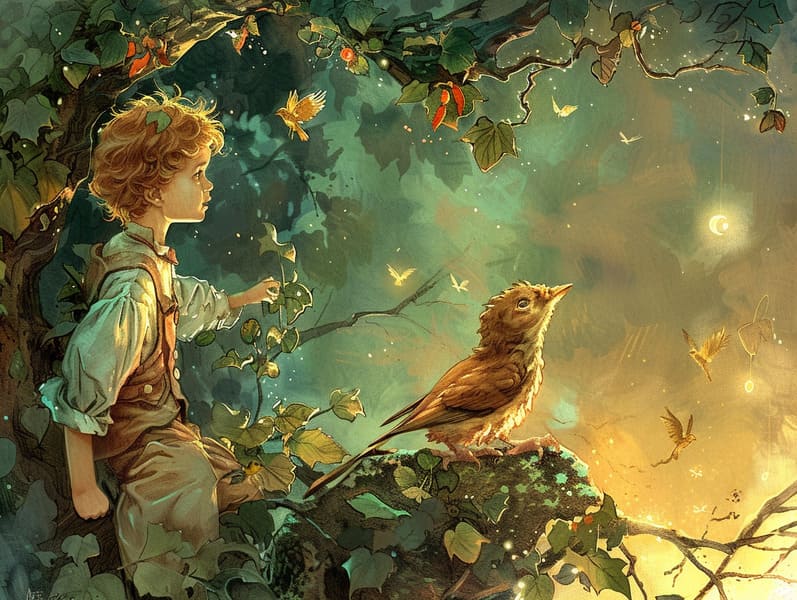The Dawn of Fairy Tales for Kids and the Unwavering Charm.
The Dawn of Fairy Tales for Kids and the Unwavering Charm.
Blog Article

Short fairy tales have deep roots. These tales have been relayed from one generation to the next long before they were ever documented. They sprang from a variety of civilizations, including Eastern traditions. They were initially told among adults, often carrying themes and messages reflective of the societal norms and beliefs of the time.
Jacob and Wilhelm Grimm, Jacob and Wilhelm (the Grimm brothers), were among the first to collect and release many of these beloved fairy tales. Their anthology, "Grimm's Fairy Stories," included tales like "The Story of Cinderella," "The Story of Hansel and Gretel," and "Snow White," which have since become classics in the world of children's fairy tales. Similarly, Hans Andersen's delightful stories, such as "The Mermaid's Tale," and "The Little Duckling," have floated into hearts worldwide, solidifying their place in the pantheon of treasured fairy tales.
Despite their historical roots, classic fairy tales remain as impactful as ever, especially as children's night stories. These fantastical tales are now available in different formats, including richly illustrated books, whimsical animations, and internet fairy tales.
Their continued relevance can be ascribed to several whimsical characteristics:
Significant Morals: Timeless fairy tales often share important moral lessons. Tales like "The Wolf and the Liar" teach the value of truth, while "The Hare and the Tortoise" emphasize the traits of resolve and meekness. These tales offer young ones clear distinctions between right and wrong, molding their moral compass in a soft yet meaningful way.
Kindness and Comprehension: Old fairy tales frequently illustrate characters facing trials and tribulations, motivating kids to resonate with their struggles and cheer for their triumphs. For instance, "Beauty and the Beast" teaches us the virtue of appreciating inner worth to comprehend the inner being of a being, cultivating insight and knowledge.
Cultural Comprehension: Many fairy tales are interwoven with the cultural contexts from which they blossomed. Discovering these fairy tales can provide captivating looks into different customs, fostering a sense of international awareness and discernment.
Inventiveness and Fantasy: The enchanted elements in timeless fairy tales—enchanted forests—foster children’s imaginative ideas. These stories carry readers to fantastical realms, provoking innovative dreams and a sense of awe that endures a lifetime.
Traditional fairy tales are not only fascinating but also teaching. They act as entrancing tools in strengthening various brain and heart skills in the young. When timeless fairy tales are spoken, they promote language development by introducing new language items and detailed sentence structures. This practice also advances listening skills and attentiveness, as young readers remain attentive, looking forward to see what happens next.
Furthermore, conversing about the themes and characters of ancient fairy tales can cultivate reasoning skills and intellectual skills. Little ones are led to spot patterns, guess what will happen, and understand cause and effect. These explorations also benefit children voice their thoughts and feelings, fostering their emotional intelligence.
In today’s modern era, the existence of digital storybooks has made these fairy tales more available than ever. Websites and digital apps share broad selections of famous fairy tales that can be read or listened via anytime, anywhere. Fairy tales told out loud are particularly prevalent, sharing an interactive method for kids to engage with these charming stories. Sound books and voiced videos transport characters and settings to life, often supplemented by fantastical audio effects and musical scores that amplify the storytelling journey.
The timeless fascination of old fairy tales lies in their ability to transform to today's society while sustaining their main lessons. Contemporary reinterpretations of these fairy tales often present more inclusive protagonists and modern settings, making them accessible to famous fairy tales for children today’s audience. However, the central morals of valor, kindness, and righteousness remain unchanged, continuing to influence audiences of all ages.
Timeless fairy tales also offer a sense of assurance and knownness. They allow a structured narrative with a straightforward beginning, middle, and end, often coming to a close with the resolution of conflicts and the triumph of goodness over badness. This reliability can be calming for young readers, making available a sense of assuredness in an unpredictable world.
Traditional fairy tales continue to mesmerize and educate new generations, maintaining their appeal and value in modern society. As bedtime stories for kids, they extend a perfect blend of charm and enlightenment, fostering moral values, empathy, and creativity. The proliferation of web-based fairy tales and the in demand status of fairy tales told out loud guarantee that these old fairy tales remain within reach to new generations.
By preserving and narrating these narratives, we continue to glorify the rich tapestry of fantasy and cultural heritage. Whether you are delving into a vibrantly illustrated book, viewing a electronic library, or playing an voice book, the spell of traditional fairy tales is always within reach. These tales demonstrate of the continued force of tales and its ability to tie us across generations and cultures.
Regardless if you are delving into a artistically illustrated book, discovering a web-based collection, or listening via an read-aloud story, the grace of Grimm's fairy tales is always within reach.
These fairy tales reveal of the unfading magic of stories and its ability to join us across time and space, forming a connection that fascinates and enlightens alike.